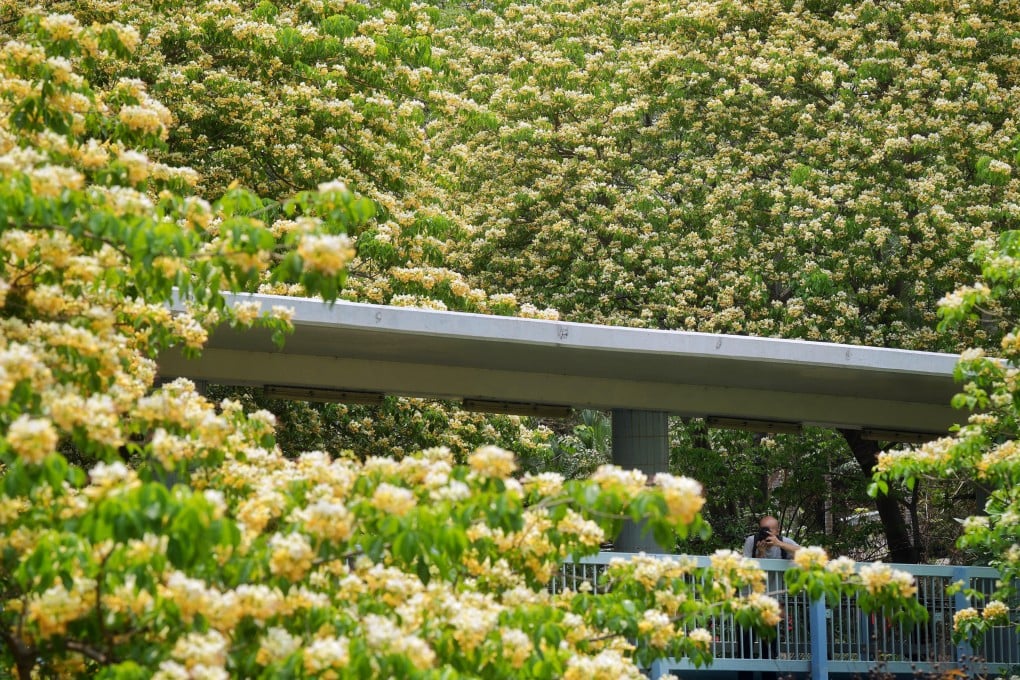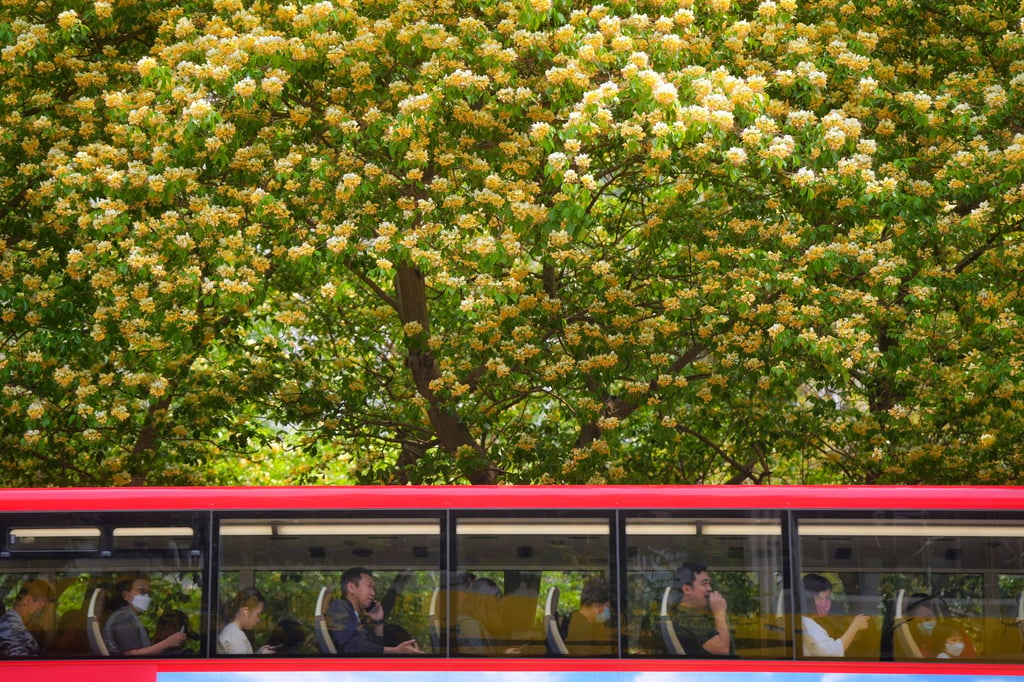Pretty tough: spider tree blooms in Hong Kong remind residents to stop and appreciate city’s stunning beauty
- Trees planted on roadsides provide bursts of colour during flowering season, with some residents starting Instagram hashtag to capture spectacle
- Foreign species chosen for its sturdiness and visual appeal

Every April, spider tree flowers would dot Hong Kong’s thoroughfares and parks in roaring patches of yellow and white, but not everyone notices or appreciates the bloom, and two campaigners want to change that.
As a foreign species from tropical Asia, the trees have been planted on roadsides and in parks in the city. They bloom from March through May with clusters of white and yellow flowers sporting long filaments that give them the colloquial name.
Urban explorer Sampson Wong Yu-hin and photographer Lam Hiu-man started a hashtag campaign “spider trees all over” on Instagram last year to gather records of such blooms, in a bid to inspire Hongkongers to explore their neighbourhood, appreciate subtle details in the city and build an archive of residents’ connections with the environment.

“Actually, there is plenty of stunning beauty in the city, but if you don’t notice it, you just won’t. Whether a city is beautiful takes many people to talk about it, as well as cultural tools, such as media, to amplify it,” said Wong, who teaches geography at Chinese University.
More than 100 posts have used the hashtag on Instagram as residents share new locations of the trees and their snaps of them in the city.
“People aren’t just snapping details of the spider trees, but also how they are situated in the environment and around architecture. These are connections to the community, which may not have existed a few years ago,” Lam noted.